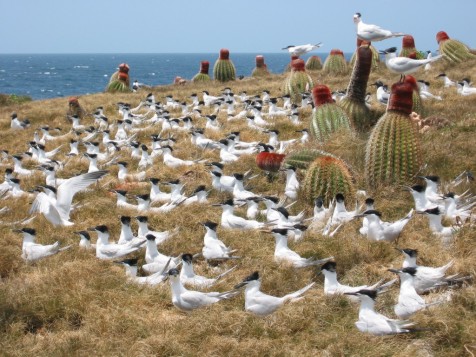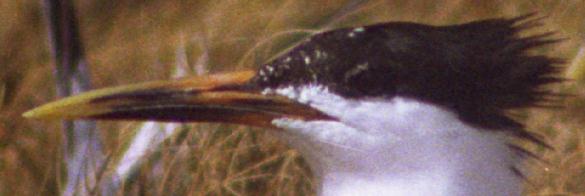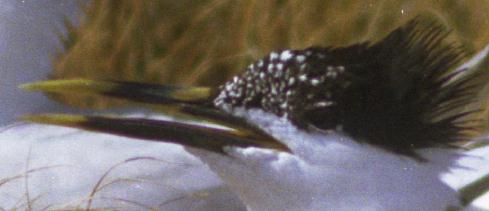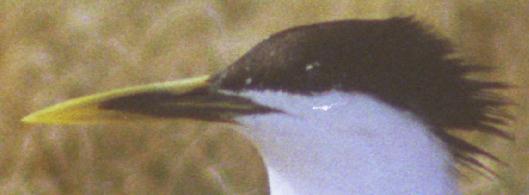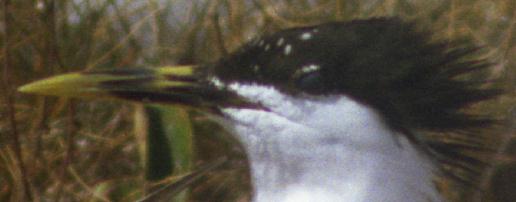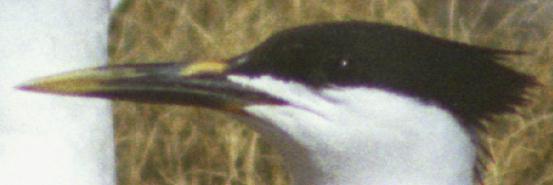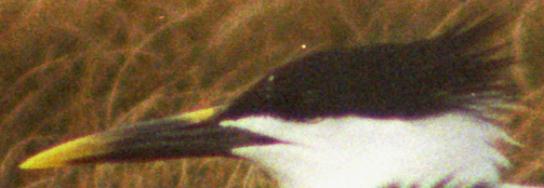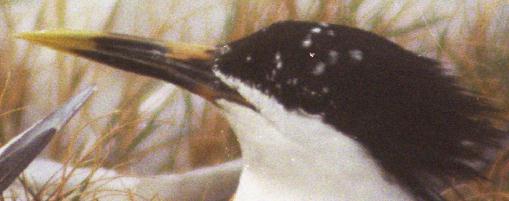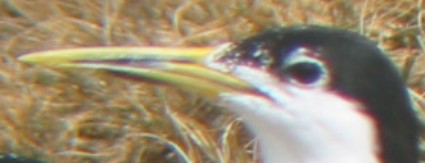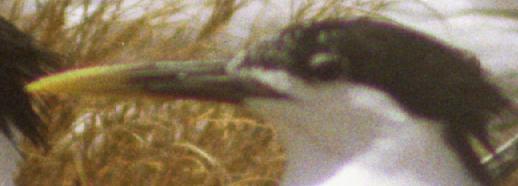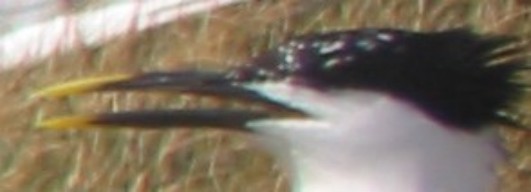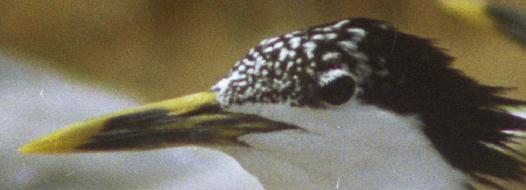The North American race of the Sandwich Tern breeds
along the Atlantic and Gulf of Mexico coasts of North America, and on
islands in the northern Caribbean Sea. It winters primarily in the
Caribbean and along the coasts of South America, where it strays as far
south as Argentina. The similar ‘Cayenne’ Tern breeds on islands in the
southern Caribbean Sea and along the Atlantic coast of South America,
and has been recorded several times along the Atlantic coast of North
America and once along the Pacific coast of Colombia. A few Cayenne
Terns nest among larger colonies of Sandwich Tern in Puerto Rico and
the Virgin Islands, and a few Sandwich-type Terns nest among larger
colonies of Cayenne Tern in the Dutch islands of the southern Caribbean
and in eastern Brazil. The increased variability of bill colouration in
the Caribbean implies that hybridisation occurs where there ranges
meet. The differences between the two taxa are discussed in this photo
essay. An article describing variation and hybridisation in the Virgin
Islands is being prepared by Floyd Hayes.
Bill colouration.–The
chief distinction between the two taxa is bill colouration. Sandwich
Tern nearly always has a black bill tipped with yellow. Cayenne Tern
usually has a yellowish bill that is rarely tinged with orange or red;
many, however, have dark blotches on the bill, which may indicate
introgression from Sandwich Tern or simply genetic variability within
the taxon. Some Cayenne Terns have a mostly black bill tipped with
yellow; such birds closely resemble Sandwich Tern but the yellow tip is
usually more extensive. Cayenne Terns with dark bill markings occur
throughout their breeding range, but appear to be most frequent in the
southern Caribbean. A crucial, unresolved question is whether
individuals with phenotypically 'intermediate' bill colouration (black
with yellow/orange blotches or yellow/orange with black blotches)
represent: (1) variant phenotypes of genotypically 'pure' Cayenne Tern;
(2) hybrids between the two taxa; or (3) a mixture of both phenomena.
Evidence for non-assortative mating in the Virgin Islands (click here)
suggests that hybridisation may be the best explanation.
Bill length and body size.–Sandwich
Tern and northern populations of the Cayenne Tern are fairly similar in
bill length and bill size. However, Cayenne Tern populations from
southern South America have notably larger bills and body sizes.
Plumage.–Cayenne
Tern tends to have a darker mantle than Sandwich Tern but considerable
overlap occurs. Breeding individuals of both races have a slight
pinkish flush on the underparts. Caribbean and central South American
populations of Cayenne Tern have a Northern Hemisphere moult cycle
similar to that of Sandwich Tern. Southern South American populations
of Cayenne Tern breed during the austral winter and have a Southern
Hemisphere moult cycle. |
